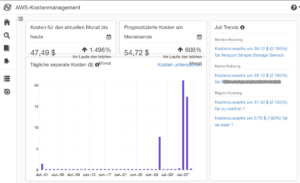When i saw the announcement of the changes to the Internal Use Rights (IUR) from Microsoft, I was shocked and pissed. Like many other partners, I told Microsoft, that this was a terrible idea, and that small partner must use the technology they need to support on a daily base. Now Microsoft has changed their mind, and they realised that the initial idea was bad! They announced that they would reverse the formerly announced changes.
We listened to you, and we have acted.
I also listened to you, and I also acted! You inspired me…
However, at least for me, the mind change comes too late!
Back let us start way earlier: I Started my own business as an independent consultant in the late nineties. I did consulting for Unix, lots of Lotus products and a few Microsoft products. After a while, I started to do more and more with Microsoft Technology (mostly Active Directory and Exchange engagements). But my own infrastructure was mostly based on Linux, Mac and lots of Open Source technology for a long time. Most of the automation was done in Perl and Python, for me and most of my customers. Then I found a scripting language called Monad. I was interested, because Perl on Windows sucked most of the time.
Then in 2006 Microsoft announced Microsoft Exchange Server 2007, with PowerShell support! Great, cause PowerShell is the follow up to Monad and I was able to automate nearly everything my customers needed immediately.
About the time more and more customers asked to Exchange and PowerShell Support. Nevertheless, I still did many other stuff, and I found Ruby the perfect replacement for Perl, so I did more with Python and Ruby and the rest with PowerShell.
In 2011 a customer asked me to support for a project: Migrate away from BPOS (Remember: Business Productivity Online Suite). After I signed the contract and some NDA’s (non-disclosure agreements), I found out that there is a product called Microsoft Office 365! I was kind of a “Love at first sight” for me! Because the cloud solution was awesome, and all my Exchange and Powershell knowledge was very valuable.
Life was good and I did many projects with migrations and consulting, especially migrations or complex hybrid scenarios. Then I decided to change my business model, away from the “one-man army” and start a real consulting business. With a small team and our own infrastructure. Great, but as a small IT consulting company in the Microsoft area you should use what you sell and support, I called that “Eat your own dog-food” back then. And we started to use more and more Microsoft products internally, to be honest: Whenever it was possible to run a workload on Windows, we did it. We migrated mostly everything away from Linux and Mac OSX based servers to Windows based solutions. We also replaced our Hypervisor with Hyper-V, and that was a big step backwards at the time I decided to do that.
An 90 percent of automation was done in PowerShell and more and more development in C#.
Licensing was never an issue! We have the Internal Use Rights (IUR) and Action Pack. Even Office 365 workloads are part of this, fine… But there are a few options that we use that needs to be paid. OK, why not?
Now a couple of years later, Microsoft decided to thread me like a scrounger! For sure, I was pissed. But immediately I realised that I was in a kind of a vendor locked in situation! My fault not Microsoft’s.
Now they changed their mind, again! Partners are valuable and not scrounger’s!
Fine, let me explain what I invested into the partnership in the last few years:
- Annual payment for the partnership program (It’s not free)
- The certifications (Needed to get and to stay at the competency level)
- Pay for some prep courses - Some in the team needed a some trainings
- Pay for the Microsoft Action Pack (As an addition in my case)
- The hardware to run the on premises environment (Plus operational cost for everything)
- Pay the requirements for some of the services
And, as most of my customers, I will search for a solid, but cheap, solution. It can be Microsoft, but in some cases it will be another vendor/service provider.
Here are a few examples where I already found cheaper solutions:
- CRM - Way cheaper, any even better for small customers like me
- Cloud Storage - Already moved most backup targets away from Azure Storage
- Virtual machines

And Microsoft is totally right: Customers ask me what I use and why! And like in the past, they might also buy what I use.
Don’t get me wrong, I’m a small partner! Most of my customers don’t buy from me, they like to have big license partners! So I will not loose sales or revenue…
Same with my on premises environment, I will reduce the number of virtual Windows servers dramatically!
I will no longer run the following services:
- ADFS - Already Migrated and decommissioned.
- Exchange Cluster - Already Migrated and decommissioned.
- Remote Desktop Services - Never needed, was just for support purposes.
- Reverse Proxies - Already migrated to NGINX and HAProxy
For many things I did on Windows the last few years, a Linux or Mac based solution is available, my TeamCity build server is the perfect example for that. All the services will be transferred within the next few weeks.
I will still run a few Windows Server 2016 based systems, like Active Directory and AzureAD Connect. I already own licenses for these systems. And I run more services on a reduced number of hosts, that will cause much less work to keep everything updated. And we don’t need everything available all the time! So there will be outages when we patch the systems, who cares!
This will definitely change a lot, at least for me and my team! Microsoft will not care, and I don’t think that many partner will do such dramatic steps! They will will be happy that the free ride isn’t over. And I totally understand that. I really do!
However, it will also change a few things for others. I will no longer provide tools or scripts for stuff that I don’t use. In the last few years, most of the tooling were done on my own environment, when I don’t have such an environment, I will develop most of the stuff on customer systems, and they will own it. Like it was until about 3 years ago!
I know; I could still run a dedicated development or internal test environment! That makes no sense to me! The problem of such an environment is the data! Today I use the same systems that we use daily… Because there is a lot of data, and for good results, you need such data. I know hat you thinking: “Development in production is a terrible idea!”, and I totally agree. Even so, my environment is designed set up like for this from day one. And as a small company it is way too expensive to have a dedicated environment with good dummy data to do testing.
And I escaped the vendor lock, that I created by myself! I now manage a real Multi Cloud scenario, what is very valuable for me.
And by reducing the investments into the partnership (Will no longer pay to be a partner) and optimisations of a few things here and there, it will be the same budget that I have to invest! Maybe more, maybe less.
